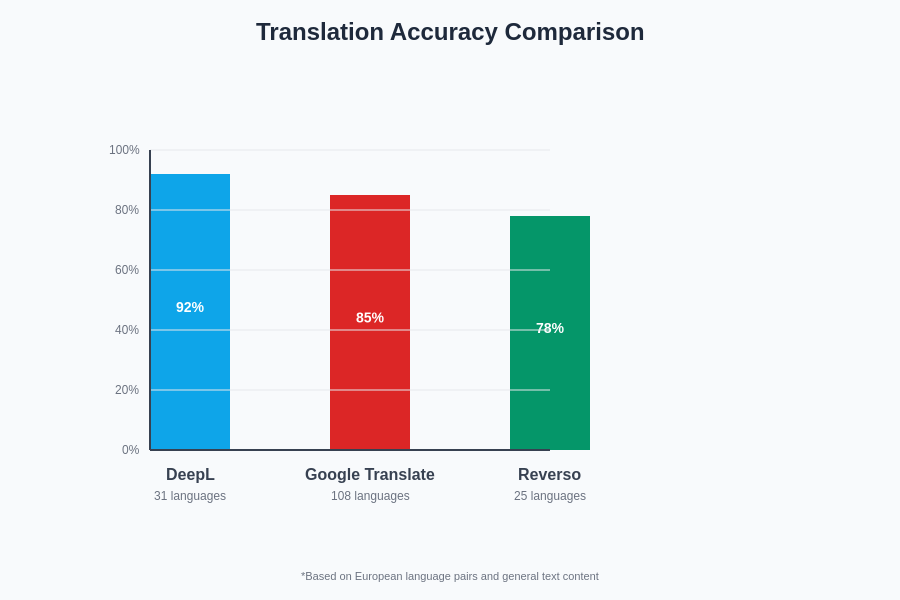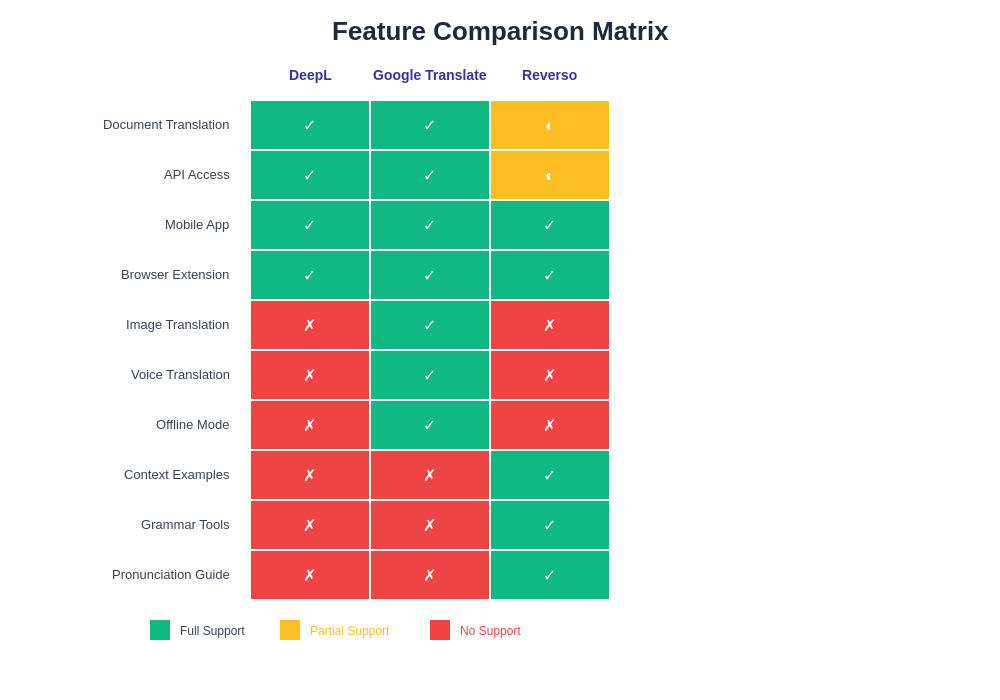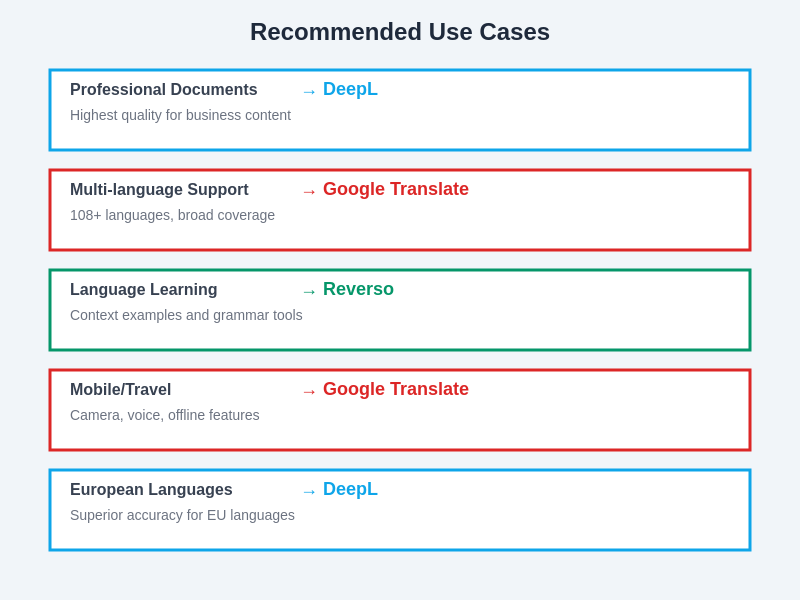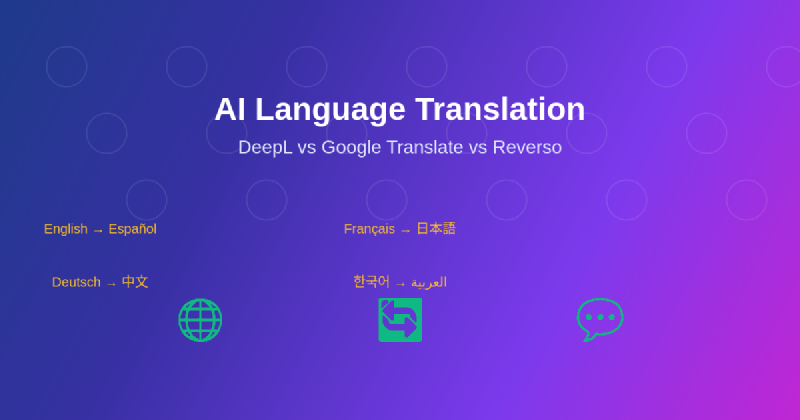The evolution of artificial intelligence has revolutionized numerous aspects of human communication, with language translation standing as one of the most transformative applications of modern AI technology. The barriers that once separated cultures and communities through linguistic differences are rapidly dissolving as sophisticated AI translation systems become increasingly accurate, accessible, and versatile. Among the leading platforms in this competitive landscape, DeepL, Google Translate, and Reverso have emerged as dominant forces, each offering unique approaches to bridging language gaps through advanced machine learning algorithms and neural network architectures.
Explore the latest AI translation trends to discover cutting-edge developments in multilingual communication technologies that are reshaping global connectivity. The transformation of language translation from basic word-for-word conversion to contextually aware, culturally sensitive communication tools represents one of the most remarkable achievements in applied artificial intelligence, fundamentally changing how individuals, businesses, and organizations approach cross-cultural communication in an increasingly interconnected world.
The Foundation of Modern AI Translation
The technological foundation underlying contemporary AI translation systems represents a dramatic departure from earlier rule-based and statistical translation methods. Modern platforms leverage deep learning architectures, particularly transformer models and neural machine translation systems, to understand not merely individual words but entire contexts, cultural nuances, and linguistic subtleties that define authentic human communication. These sophisticated systems analyze vast multilingual datasets, learning patterns and relationships between languages that enable them to produce translations that often approach human-level quality and naturalness.
The neural networks powering these translation engines process language through multiple layers of analysis, examining syntax, semantics, pragmatics, and cultural context to generate translations that maintain both literal accuracy and communicative intent. This multifaceted approach has enabled AI translation systems to handle complex linguistic phenomena such as idiomatic expressions, metaphors, technical terminology, and culturally specific references that previously presented insurmountable challenges for automated translation systems.
DeepL: Precision Through Advanced Neural Architecture
DeepL has distinguished itself in the translation landscape through its commitment to delivering exceptionally high-quality translations that often surpass competitors in terms of naturalness and contextual accuracy. The platform’s proprietary neural network architecture, built upon extensive European language datasets, demonstrates particular strength in translating between European languages while maintaining remarkable precision in capturing subtle linguistic nuances and stylistic elements that define authentic communication.
The company’s approach to training their translation models emphasizes quality over quantity, utilizing carefully curated datasets and sophisticated training methodologies that prioritize accuracy and fluency in their output. This meticulous approach has resulted in translations that frequently exhibit superior coherence, appropriate register selection, and natural-sounding target language expressions that closely mirror how native speakers would naturally express equivalent ideas and concepts.
DeepL’s user interface reflects this commitment to quality through its clean, intuitive design that prioritizes the translation experience while providing useful features such as alternative translation suggestions, document translation capabilities, and integration options for various professional workflows. The platform’s API offerings have made it particularly attractive to businesses and developers seeking to integrate high-quality translation capabilities into their applications and services.
Enhance your AI capabilities with Claude for advanced language understanding and multilingual content creation that complements traditional translation services. The integration of multiple AI language tools creates a comprehensive ecosystem for cross-cultural communication and content localization across diverse linguistic contexts.
Google Translate: Scale and Accessibility
Google Translate represents perhaps the most widely recognized and extensively used translation platform globally, serving billions of translation requests across more than one hundred languages and dialects. The platform’s strength lies not only in its impressive language coverage but also in its seamless integration across Google’s ecosystem of services and its accessibility through multiple interfaces including web applications, mobile apps, browser extensions, and API integrations that make translation services readily available to users worldwide.
The underlying technology powering Google Translate has evolved significantly over the years, transitioning from phrase-based statistical translation to sophisticated neural machine translation systems that leverage Google’s massive computational resources and extensive multilingual datasets. This evolution has resulted in substantial improvements in translation quality while maintaining the platform’s characteristic speed and broad language support that has made it indispensable for millions of users seeking quick and reliable translation assistance.
Google’s approach to translation technology emphasizes continuous learning and improvement through user feedback, real-world usage patterns, and ongoing refinement of their neural network architectures. The platform’s ability to handle diverse content types, from simple text snippets to complex documents, images with embedded text, and even real-time conversation translation, demonstrates the versatility and robustness of their translation infrastructure.
The integration of Google Translate with other Google services creates a seamless multilingual experience across platforms, enabling users to translate emails, documents, web pages, and other content without leaving their preferred Google applications. This ecosystem approach has contributed significantly to the platform’s widespread adoption and continued dominance in the consumer translation market.
Reverso: Context and Learning Integration
Reverso distinguishes itself through its unique focus on contextual understanding and language learning integration, offering translation services that extend beyond basic text conversion to provide comprehensive linguistic education and cultural insight. The platform’s strength lies in its ability to present translations within authentic contextual examples drawn from real-world usage, helping users understand not just what words mean but how they are actually used in natural communication by native speakers.
The contextual approach employed by Reverso provides users with multiple example sentences, phrases, and expressions that demonstrate how translated terms function within various communicative situations. This methodology proves particularly valuable for language learners, professional translators, and anyone seeking to develop deeper understanding of linguistic nuances and cultural appropriateness in their target languages.
Reverso’s translation technology incorporates collaborative elements that allow users to contribute to and benefit from community-driven improvements in translation quality and contextual accuracy. This collaborative approach creates a dynamic learning environment where users can explore alternative translations, understand regional variations, and access explanations that illuminate the reasoning behind particular translation choices.
The platform’s educational features, including pronunciation guides, conjugation tables, and grammar explanations, position it as more than a simple translation tool but rather as a comprehensive language learning resource that supports both immediate translation needs and long-term linguistic development goals.
Comparative Analysis: Accuracy and Quality
When evaluating translation accuracy across DeepL, Google Translate, and Reverso, the performance characteristics vary significantly depending on language pairs, content types, and specific use cases. DeepL consistently demonstrates superior performance in European language translations, particularly for content requiring nuanced understanding of cultural context, formal register, and sophisticated vocabulary. The platform’s translations often exhibit more natural flow and appropriate stylistic choices that align with native speaker expectations.
Google Translate’s strength lies in its remarkable consistency across its extensive language portfolio and its ability to handle diverse content types with reasonable accuracy. While individual translations may occasionally lack the polish and nuance of DeepL’s output, Google’s platform provides reliable, comprehensible translations across a much broader range of language pairs and specialized domains, making it particularly valuable for users requiring translation support across multiple languages.
Reverso’s accuracy benefits from its contextual approach, often providing translations that are not only linguistically correct but also pragmatically appropriate for specific communicative situations. The platform’s emphasis on real-world usage examples helps ensure that translations align with natural language patterns and cultural expectations, though this focus may sometimes result in more conservative translation choices that prioritize clarity over stylistic elegance.

The quantitative analysis of translation accuracy reveals significant differences in performance across various metrics, with each platform demonstrating distinct strengths that align with their design philosophies and target use cases.
Discover comprehensive AI research capabilities with Perplexity for in-depth analysis and comparison of translation technologies and their applications across different industries and use cases. The combination of multiple AI tools creates a robust framework for understanding and leveraging translation technology in professional and academic contexts.
Feature Comparison and User Experience
The feature sets offered by DeepL, Google Translate, and Reverso reflect their different philosophical approaches to translation technology and user experience design. DeepL focuses on delivering premium translation quality through a streamlined interface that prioritizes the core translation experience while providing essential features such as document translation, text formatting preservation, and API access for professional integration needs.
Google Translate offers the most comprehensive feature set, including image translation through optical character recognition, real-time conversation translation, offline translation capabilities, and extensive integration with other Google services. The platform’s mobile applications provide particularly robust functionality for travelers and on-the-go translation needs, with features such as camera translation, handwriting recognition, and voice input that make translation accessible in various practical scenarios.
Reverso’s feature set emphasizes educational value and contextual understanding through its extensive example databases, pronunciation guides, and grammar references. The platform provides translation history, personalized learning features, and collaborative elements that support both immediate translation needs and long-term language acquisition goals.
The user experience design across these platforms reflects their target audiences and primary use cases. DeepL’s clean, professional interface appeals to users prioritizing translation quality and efficiency. Google Translate’s familiar, accessible design accommodates casual users while providing advanced features for power users. Reverso’s educational interface serves users seeking comprehensive linguistic understanding alongside their translation needs.

The comprehensive feature analysis demonstrates how each platform has developed distinct capabilities that serve different user needs and workflow requirements, with clear specialization patterns emerging across the competitive landscape.
Language Coverage and Specialization
The language coverage offered by each platform reflects different strategic approaches to serving global translation needs. Google Translate provides the most extensive language support, covering over one hundred languages including many less commonly spoken languages and regional dialects that other platforms may not support. This broad coverage makes Google Translate invaluable for users requiring translation support across diverse linguistic communities and specialized regional contexts.
DeepL’s more focused approach concentrates on delivering exceptional quality within a smaller set of primarily European languages, with ongoing expansion to include additional language pairs as their training methodologies and datasets develop. This selective approach allows DeepL to maintain their high quality standards while gradually expanding their linguistic reach through careful, methodical development of new language capabilities.
Reverso occupies a middle ground with substantial coverage of major world languages while maintaining their focus on providing contextual examples and educational resources for supported language pairs. The platform’s strength lies not in breadth of coverage but in depth of linguistic insight and contextual understanding for the languages they support.
Specialized domain translation capabilities vary across platforms, with each offering different strengths in technical, legal, medical, and business translation contexts. Professional users often benefit from evaluating multiple platforms to identify which performs best for their specific domain requirements and quality expectations.
Integration and API Capabilities
The integration capabilities offered by these translation platforms significantly impact their utility for developers, businesses, and organizations seeking to incorporate translation functionality into their applications and workflows. DeepL’s API provides developers with access to high-quality translation capabilities through well-documented, reliable endpoints that maintain the platform’s reputation for translation excellence in programmatic implementations.
Google Translate’s API offerings benefit from Google Cloud’s extensive infrastructure and service ecosystem, providing robust scalability, comprehensive documentation, and integration with other Google Cloud services that can enhance translation workflows with additional AI capabilities such as text analysis, content moderation, and data processing functions.
Reverso’s API focuses on providing access to their contextual translation capabilities and educational resources, enabling developers to create applications that not only translate text but also provide users with linguistic learning opportunities and contextual understanding that supports more effective cross-cultural communication.
The pricing models, usage limits, and service level agreements associated with these APIs vary significantly, requiring careful evaluation based on specific integration requirements, expected usage volumes, and budget considerations. Many organizations benefit from implementing multi-platform approaches that leverage the unique strengths of different translation services for optimal results across diverse use cases.
Privacy and Security Considerations
Privacy and security considerations play increasingly important roles in translation service selection, particularly for organizations handling sensitive or confidential information. Each platform approaches data privacy and security through different policies and technical implementations that users must carefully evaluate based on their specific requirements and regulatory compliance obligations.
DeepL emphasizes privacy protection through features such as immediate text deletion after translation, optional data processing agreements for business users, and transparent privacy policies that detail how user data is handled throughout the translation process. The platform’s European origins and GDPR compliance provide additional assurance for users prioritizing data protection and privacy rights.
Google Translate’s privacy and security practices are governed by Google’s broader privacy policies and security infrastructure, which provide robust protection while enabling the data analysis necessary for continuous service improvement. Users can access various privacy controls and settings to manage how their translation data is processed and stored within Google’s ecosystem.
Reverso’s approach to privacy focuses on protecting user data while enabling the collaborative and educational features that distinguish their platform. Users should review the platform’s privacy policies and data handling practices to ensure alignment with their privacy expectations and requirements.
Organizations processing sensitive information should consider implementing additional security measures such as on-premises translation solutions, data anonymization techniques, or specialized enterprise translation services that provide enhanced security guarantees and compliance certifications.
Performance and Speed Optimization
Translation speed and performance characteristics significantly impact user experience and practical utility across different use cases and deployment scenarios. DeepL generally provides rapid translation responses while maintaining their high quality standards, though processing times may vary based on text length, complexity, and current server loads. The platform’s focus on quality sometimes results in slightly longer processing times compared to competitors, but users typically find the quality improvements justify any minimal time differences.
Google Translate leverages Google’s massive global infrastructure to deliver consistently fast translation responses across all supported languages and content types. The platform’s optimization for speed and scalability makes it particularly suitable for high-volume applications, real-time translation needs, and scenarios where immediate response times are critical for user experience and workflow efficiency.
Reverso’s performance characteristics reflect the platform’s emphasis on contextual analysis and educational features, with response times that accommodate the additional processing required to generate contextual examples and linguistic insights alongside basic translation functionality. Users seeking contextual understanding and educational value typically find the comprehensive responses worth any additional processing time.
Performance optimization strategies for each platform include caching mechanisms, batch processing capabilities, and intelligent load balancing that help maintain consistent response times even during peak usage periods. Organizations implementing large-scale translation workflows should evaluate performance characteristics under their specific usage patterns and load requirements.
Future Developments and Innovation Trends
The future evolution of AI translation technology promises continued advancement in accuracy, naturalness, and specialized capability development across all major platforms. DeepL continues investing in expanding their language coverage while maintaining their quality leadership through advanced neural network research and sophisticated training methodologies that push the boundaries of translation naturalness and contextual accuracy.
Google’s translation research focuses on multimodal translation capabilities, real-time conversation enhancement, and integration with emerging AI technologies that could revolutionize how translation services understand and process human communication across diverse contexts and communication modalities.
Reverso’s development roadmap emphasizes enhanced contextual understanding, improved educational features, and expanded collaborative capabilities that strengthen the platform’s position as a comprehensive language learning and translation resource that serves both immediate communication needs and long-term linguistic development goals.
Industry-wide trends include increased focus on domain-specific translation optimization, enhanced privacy and security features, improved handling of cultural nuances and context-dependent expressions, and development of more sophisticated evaluation metrics that better capture translation quality from user perspective rather than purely algorithmic assessments.
The integration of translation capabilities with other AI technologies such as content generation, sentiment analysis, and cultural adaptation tools promises to create more comprehensive communication platforms that address not only linguistic conversion but also cultural bridge-building and effective cross-cultural communication facilitation.
Practical Recommendations and Best Practices
Selecting the optimal translation platform requires careful consideration of specific use cases, quality requirements, feature needs, and integration constraints that define successful translation implementation. For users prioritizing maximum translation quality and naturalness, particularly for European language pairs, DeepL represents the superior choice despite its more limited language coverage and higher cost structure for extensive usage scenarios.
Google Translate serves as the most versatile option for users requiring broad language support, extensive feature sets, and seamless integration with existing Google services and workflows. The platform’s combination of reasonable quality, comprehensive coverage, and robust infrastructure makes it suitable for most general translation needs and high-volume applications where consistency and reliability outweigh absolute quality optimization.
Reverso provides optimal value for users seeking contextual understanding, educational benefits, and comprehensive linguistic insight alongside their translation requirements. The platform excels in supporting language learning objectives and providing translation solutions that enhance cultural understanding and communication effectiveness beyond simple linguistic conversion.
Professional applications often benefit from multi-platform strategies that leverage each service’s unique strengths for different aspects of translation workflows. Organizations may use DeepL for high-priority content requiring maximum quality, Google Translate for high-volume or broad-language coverage needs, and Reverso for educational content and contextual validation of translation choices.
Implementation best practices include establishing quality evaluation processes, developing consistency guidelines for translation workflows, implementing appropriate security measures for sensitive content, and maintaining awareness of platform limitations and optimal use cases that maximize translation effectiveness while minimizing potential issues or misunderstandings.

Strategic platform selection based on specific use case requirements ensures optimal translation outcomes while maximizing value and efficiency across diverse application scenarios and organizational needs.
Disclaimer
This article is for informational purposes only and does not constitute professional advice regarding translation service selection or implementation. Translation quality and suitability vary based on specific use cases, language pairs, content types, and user requirements. Readers should conduct their own evaluation and testing of translation services to determine optimal solutions for their specific needs. The effectiveness and accuracy of AI translation services continue to evolve, and users should stay informed about platform updates, capability changes, and best practices for translation implementation.
